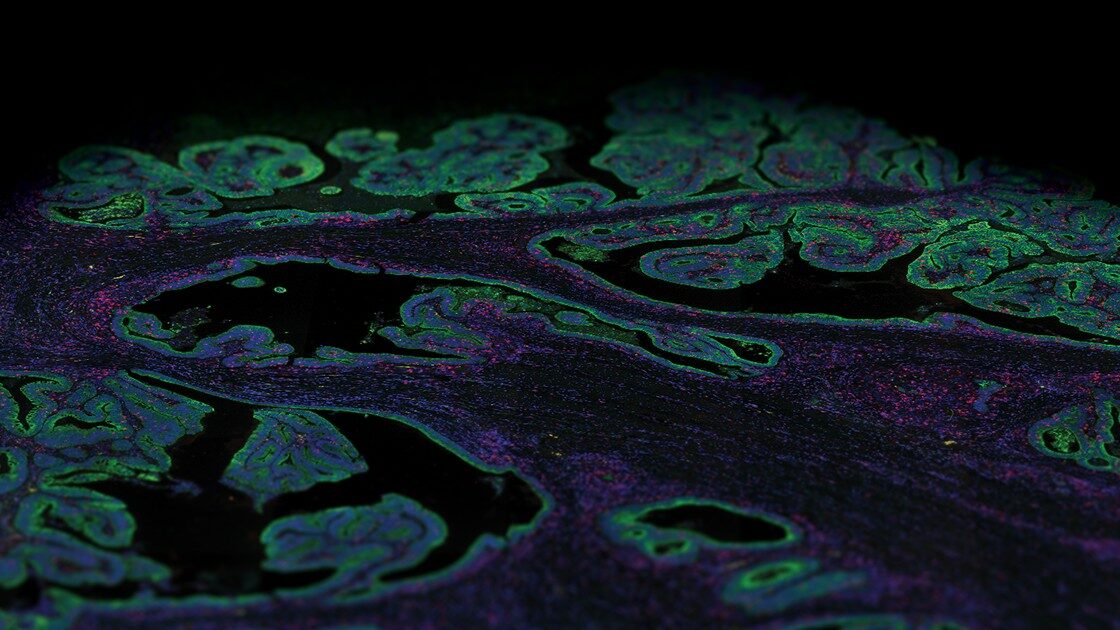
GeoMx® Protein Assays
High-plex Spatial Proteomics Made Easy
GeoMx® DSP Protein Assays enable quantitative, spatial analysis of up to 570+ proteins from a single FFPE or fresh frozen tissue section, vastly expanding the number of markers you can profile from a single tissue section compared to traditional immunohistochemical methods. All assays are validated for use in multiplex so you can spend more time discovering new biology and less time troubleshooting assay performance.
Each assay is made up of IHC-compatible antibodies coupled to photocleavable oligonucleotide barcodes designed for readout with either the nCounter® Analysis System or via next-generation sequencing (NGS) using an Illumina system. After hybridization of antibodies to tissue sections, the barcodes are released from discrete regions of interest (ROIs) on the tissue via exposure to UV light. Released tags are counted and mapped back to tissue location, yielding a spatially resolved digital profile of protein expression.